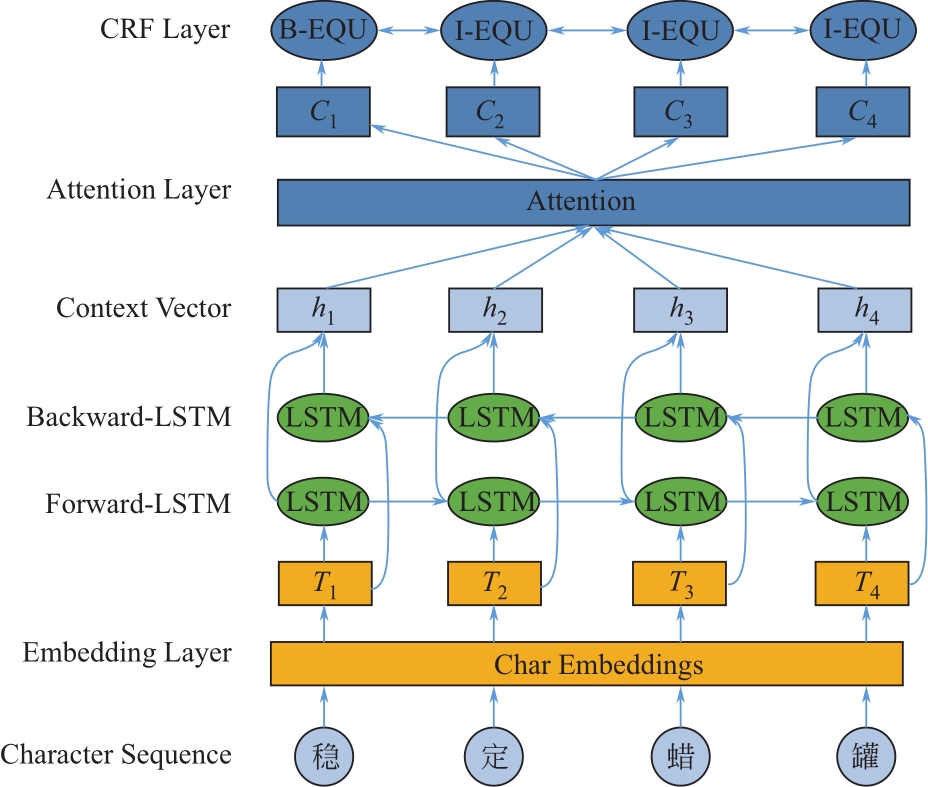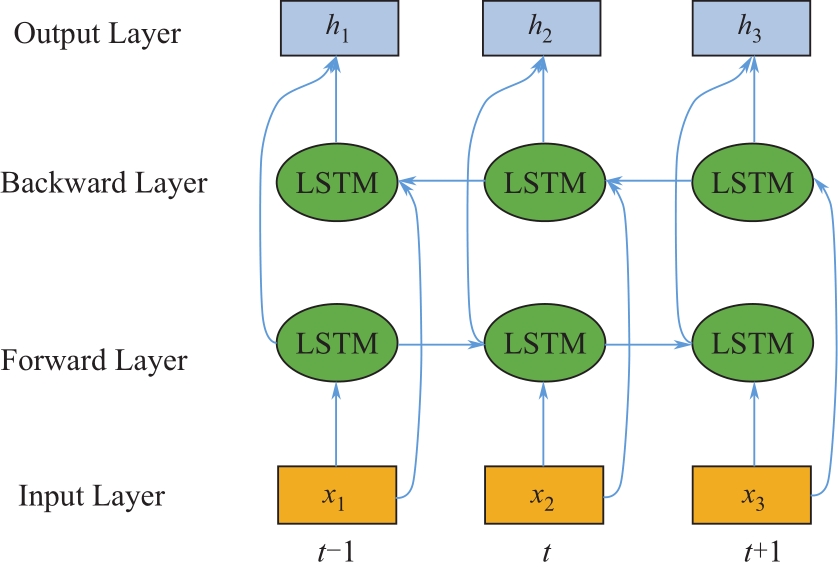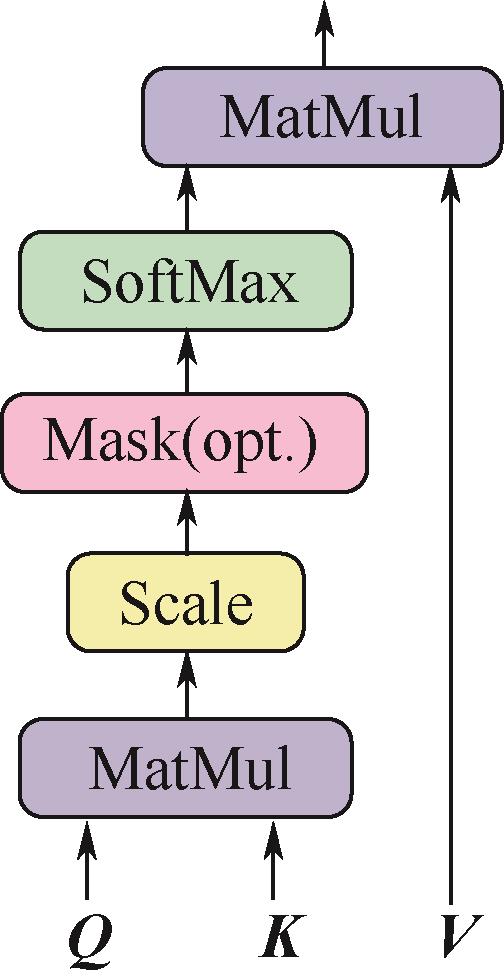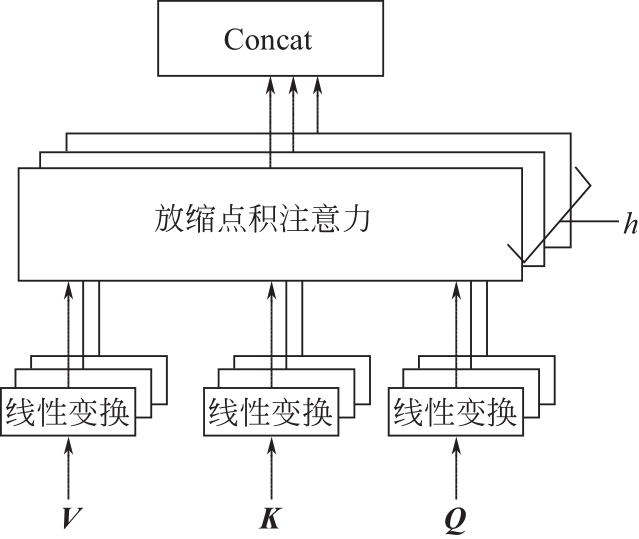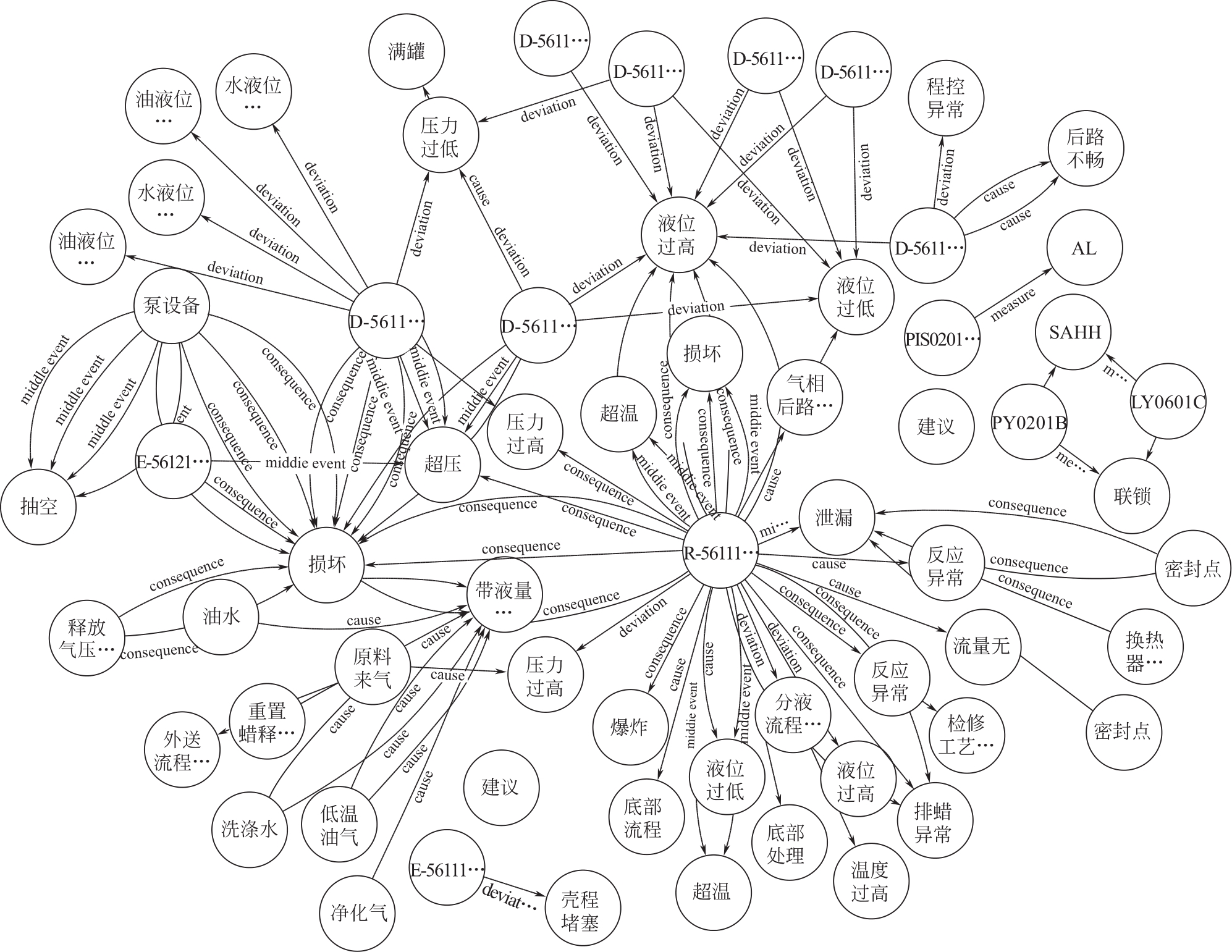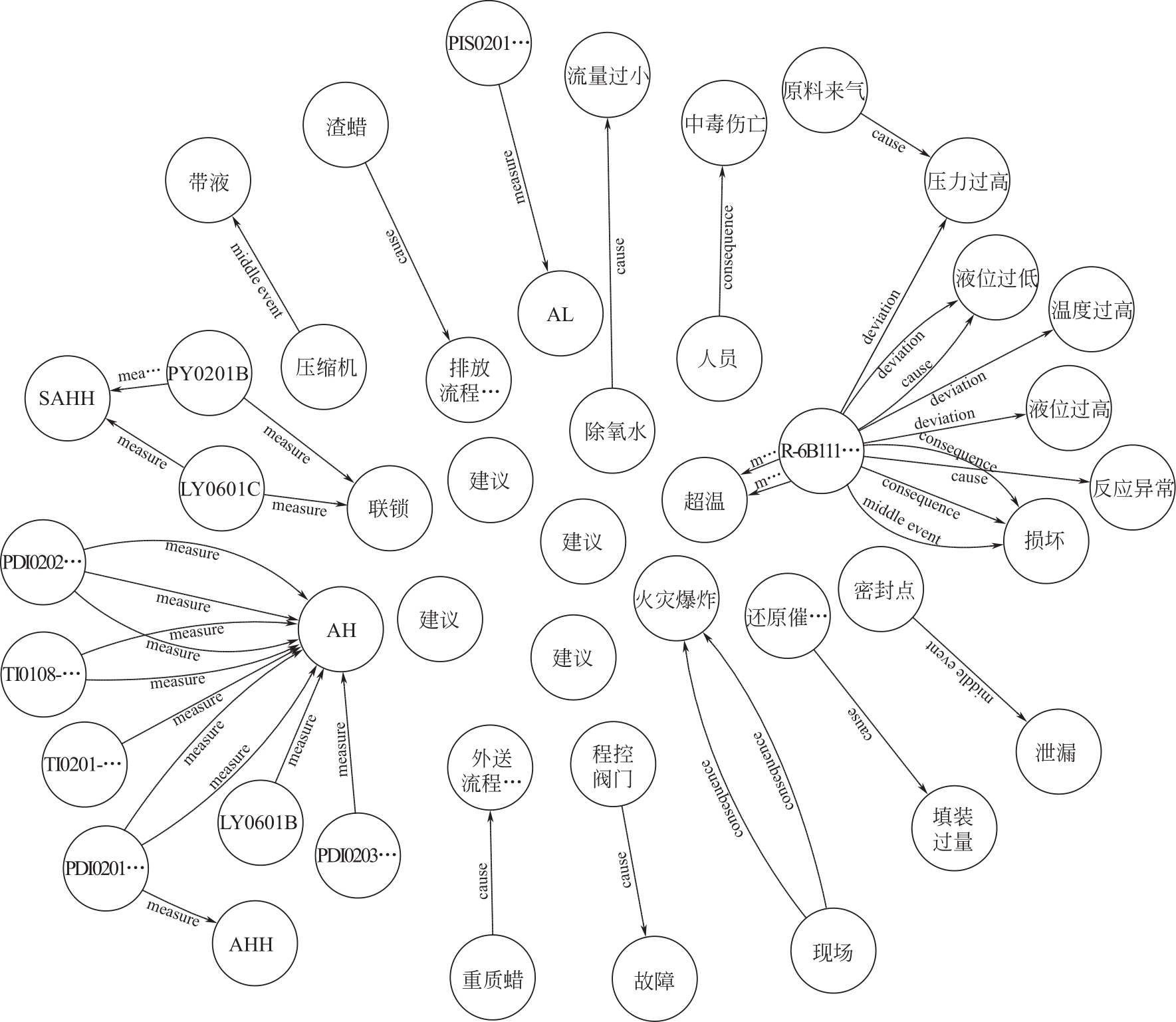Chemical Industry and Engineering Progress ›› 2021, Vol. 40 ›› Issue (8): 4666-4677.DOI: 10.16085/j.issn.1000-6613.2020-2004
• Chemical industry park • Previous Articles Next Articles
Construction method of HAZOP knowledge graph
LI Fangguo( ), ZHANG Beike, GAO Dong(
), ZHANG Beike, GAO Dong( )
)
- College of Information Science and Technology, Beijing University of Chemical Technology, Beijing 100029, China
-
Received:2020-10-08Online:2021-08-12Published:2021-08-05 -
Contact:GAO Dong
HAZOP知识图谱构建方法
- 北京化工大学信息科学与技术学院,北京 100029
-
通讯作者:高东 -
作者简介:李芳国(1995—),男,硕士研究生,研究方向为知识图谱、命名实体识别。E-mail:1296859045@qq.com 。 -
基金资助:国家自然科学基金(61703026)
CLC Number:
Cite this article
LI Fangguo, ZHANG Beike, GAO Dong. Construction method of HAZOP knowledge graph[J]. Chemical Industry and Engineering Progress, 2021, 40(8): 4666-4677.
李芳国, 张贝克, 高东. HAZOP知识图谱构建方法[J]. 化工进展, 2021, 40(8): 4666-4677.
share this article
Add to citation manager EndNote|Ris|BibTeX
URL: https://hgjz.cip.com.cn/EN/10.16085/j.issn.1000-6613.2020-2004
| 实体类型 | 开始标记 | 后续标记 |
|---|---|---|
| 设备 | B-EQU | I-EQU |
| 物料 | B-MAT | I-MAT |
| 状态 | B-STA | I-STA |
| 非实体标记 | O | O |
| 实体类型 | 开始标记 | 后续标记 |
|---|---|---|
| 设备 | B-EQU | I-EQU |
| 物料 | B-MAT | I-MAT |
| 状态 | B-STA | I-STA |
| 非实体标记 | O | O |
| 模型 | 精确度(P) | 召回率(R) | F1 |
|---|---|---|---|
| CRF | 71.71 | 72.14 | 71.93 |
| BiLSTM-CRF | 75.54 | 78.97 | 77.22 |
| BiLSTM-Self-Attention-CRF | 80.58 | 83.00 | 81.77 |
| BiLSTM-Multi-Head Attention-CRF | 88.70 | 90.48 | 89.58 |
| 模型 | 精确度(P) | 召回率(R) | F1 |
|---|---|---|---|
| CRF | 71.71 | 72.14 | 71.93 |
| BiLSTM-CRF | 75.54 | 78.97 | 77.22 |
| BiLSTM-Self-Attention-CRF | 80.58 | 83.00 | 81.77 |
| BiLSTM-Multi-Head Attention-CRF | 88.70 | 90.48 | 89.58 |
| 序号 | 参数 | 引导词 | 后果 | 原因 | 防护措施 | 建议 |
|---|---|---|---|---|---|---|
| 1 | R-5611101温度 | 过高 | 反应器超温、泄漏,现场发生火灾爆炸,人员中毒伤亡 | 1.除氧水流量过小 2.R-5611101液位过低 3.还原催化剂填装过量 | 1.TI0108-0113 AH 2.TI0201-0219 AH 3.PDI0202A/B AH 4.PDI0203A/B AH | 1.需考虑增设PDI0202A/B和PDI0203A/B压差低报 2.建议设计单位增加其他防护措施降低温度超高的危害 |
| 2 | R-5611101压力 | 过高 | 反应器损坏,密封点泄漏,现场发生火灾爆炸 | 1.原料来气压力过高 2.R-5611101反应异常 | 1.PY0201B SAHH 2.PY0201B联锁 | 1.考虑在新鲜气来气流程设置安全泄压设施,重新核算R-5611101安全泄放阀尺寸 2.建议设计单位在设计安全泄放阀时,考虑增加一组安全阀来提高安全可靠性,降低风险 |
| 3 | R-5611101液位 | 过高 | 压缩机带液,设备损坏 | 1.重质蜡外送流程不畅 | 1.PDI0202A/B AH 2.PDI0201A/B AH 3.LY0601C SAHH 4.LY0601C联锁 5.LY0601B AH 6.PIS0201A/B/C AL | |
| 4 | 过低 | 反应器超温,设备损坏 | 1.渣蜡排放流程异常 2.程控阀门故障 | 1.PDI0202A/B AH 2.PDI0201A/B AH AHH 3.TI0108-0113 AH |
| 序号 | 参数 | 引导词 | 后果 | 原因 | 防护措施 | 建议 |
|---|---|---|---|---|---|---|
| 1 | R-5611101温度 | 过高 | 反应器超温、泄漏,现场发生火灾爆炸,人员中毒伤亡 | 1.除氧水流量过小 2.R-5611101液位过低 3.还原催化剂填装过量 | 1.TI0108-0113 AH 2.TI0201-0219 AH 3.PDI0202A/B AH 4.PDI0203A/B AH | 1.需考虑增设PDI0202A/B和PDI0203A/B压差低报 2.建议设计单位增加其他防护措施降低温度超高的危害 |
| 2 | R-5611101压力 | 过高 | 反应器损坏,密封点泄漏,现场发生火灾爆炸 | 1.原料来气压力过高 2.R-5611101反应异常 | 1.PY0201B SAHH 2.PY0201B联锁 | 1.考虑在新鲜气来气流程设置安全泄压设施,重新核算R-5611101安全泄放阀尺寸 2.建议设计单位在设计安全泄放阀时,考虑增加一组安全阀来提高安全可靠性,降低风险 |
| 3 | R-5611101液位 | 过高 | 压缩机带液,设备损坏 | 1.重质蜡外送流程不畅 | 1.PDI0202A/B AH 2.PDI0201A/B AH 3.LY0601C SAHH 4.LY0601C联锁 5.LY0601B AH 6.PIS0201A/B/C AL | |
| 4 | 过低 | 反应器超温,设备损坏 | 1.渣蜡排放流程异常 2.程控阀门故障 | 1.PDI0202A/B AH 2.PDI0201A/B AH AHH 3.TI0108-0113 AH |
| 序号 | 偏差 | 中间事件 | 后果 | 原因 | 防护措施 | 建议 |
|---|---|---|---|---|---|---|
| 1 | EQU:R-5611101 STA:温度过高 | EQU:反应器 STA:超温 | EQU:反应器 STA:泄漏 STA:火灾爆炸 STA:中毒伤亡 | 1.MAT:除氧水 STA:流量过小 2.EQU:R-5611101 STA:液位过低 3.MAT:还原催化剂 STA:填装过量 | 1.EQU:TI0108-0113 STA:AH 2.EQU:TI0201-0219 STA:AH 3.EQU:PDI0202A/B STA:AH 4.EQU:PDI0203A/B STA:AH | 1.需考虑增设PDI0202A/B和PDI0203A/B压差低报 2.建议设计单位增加其他防护措施降低温度超高的危害 |
| 2 | EQU:R-5611101 STA:压力过高 | EQU:反应器 STA:损坏 EQU:密封点 STA:泄漏 STA:火灾爆炸 | 1.MAT:原料来气 STA:压力过高 2.EQU:R-5611101 STA:反应异常 | 1.EQU:PY0201B STA: SAHH 2.EQU:PY0201B STA:联锁 | 1.考虑在新鲜气来气流程设置安全泄压设施,重新核算R-5611101安全泄放阀尺寸 2.建议设计单位在设计安全泄放阀时,需考虑增加一组安全阀来提高安全可靠性,降低风险 | |
| 3 | EQU:R-5611101 STA:液位过高 | EQU:压缩机 STA:带液 | EQU:设备 STA:损坏 | 1.MAT:重质蜡 STA:外送流程不畅 | 1.EQU:PDI0202A/B STA: AH 2.EQU:PDI0201A/B STA: AH 3.EQU:LY0601C STA: SAHH 4.EQU:LY0601C STA:联锁 5.EQU:LY0601B STA:AH 6.EQU:PIS0201A/BC STA:AL | |
| 4 | EQU:R-5611101 STA:液位过低 | EQU:反应器 STA:超温 | EQU:设备 STA:损坏 | 1.MAT:渣蜡 STA:排放异常 2.EQU:程控阀门 STA:故障 | 1.EQU:PDI0202A/B STA:AH 2.EQU:PDI0201A/B STA:AH STA:AHH 3.EQU:TI0108-0113 STA: AH |
| 序号 | 偏差 | 中间事件 | 后果 | 原因 | 防护措施 | 建议 |
|---|---|---|---|---|---|---|
| 1 | EQU:R-5611101 STA:温度过高 | EQU:反应器 STA:超温 | EQU:反应器 STA:泄漏 STA:火灾爆炸 STA:中毒伤亡 | 1.MAT:除氧水 STA:流量过小 2.EQU:R-5611101 STA:液位过低 3.MAT:还原催化剂 STA:填装过量 | 1.EQU:TI0108-0113 STA:AH 2.EQU:TI0201-0219 STA:AH 3.EQU:PDI0202A/B STA:AH 4.EQU:PDI0203A/B STA:AH | 1.需考虑增设PDI0202A/B和PDI0203A/B压差低报 2.建议设计单位增加其他防护措施降低温度超高的危害 |
| 2 | EQU:R-5611101 STA:压力过高 | EQU:反应器 STA:损坏 EQU:密封点 STA:泄漏 STA:火灾爆炸 | 1.MAT:原料来气 STA:压力过高 2.EQU:R-5611101 STA:反应异常 | 1.EQU:PY0201B STA: SAHH 2.EQU:PY0201B STA:联锁 | 1.考虑在新鲜气来气流程设置安全泄压设施,重新核算R-5611101安全泄放阀尺寸 2.建议设计单位在设计安全泄放阀时,需考虑增加一组安全阀来提高安全可靠性,降低风险 | |
| 3 | EQU:R-5611101 STA:液位过高 | EQU:压缩机 STA:带液 | EQU:设备 STA:损坏 | 1.MAT:重质蜡 STA:外送流程不畅 | 1.EQU:PDI0202A/B STA: AH 2.EQU:PDI0201A/B STA: AH 3.EQU:LY0601C STA: SAHH 4.EQU:LY0601C STA:联锁 5.EQU:LY0601B STA:AH 6.EQU:PIS0201A/BC STA:AL | |
| 4 | EQU:R-5611101 STA:液位过低 | EQU:反应器 STA:超温 | EQU:设备 STA:损坏 | 1.MAT:渣蜡 STA:排放异常 2.EQU:程控阀门 STA:故障 | 1.EQU:PDI0202A/B STA:AH 2.EQU:PDI0201A/B STA:AH STA:AHH 3.EQU:TI0108-0113 STA: AH |
| 1 | 吴重光. 危险与可操作性分析(HAZOP)基础及应用[M]. 北京: 中国石化出版社, 2012. |
| WU Chongguang. Hazard and operability analysis basic and application[M]. Beijing: China Petrochemical Press, 2012. | |
| 2 | DUNJÓ J, FTHENAKIS V, VÍLCHEZ J A, et al. Hazard and operability (HAZOP) analysis. A literature review[J]. Journal of Hazardous Materials, 2010, 173(1/2/3): 19-32. |
| 3 | VIEGAS R A, FRANCISCO DE ASSIS DA SILVA MOTA, COSTA A P C S, et al. A multi-criteria-based hazard and operability analysis for process safety[J]. Process Safety and Environmental Protection, 2020, 144: 310-321. |
| 4 | SINGLE J I, SCHMIDT J, DENECKE J. Ontology-based support for hazard and operability studies[J]. International Journal of Safety and Security Engineering, 2020, 10(3): 311-319. |
| 5 | 王峰, 高金吉, 张贝克, 等. 基于层次分析法的计算机辅助HAZOP分析技术[J]. 化工进展, 2008, 27(12): 2013-2018. |
| WANG Feng, GAO Jinji, ZHANG Beike, et al. Computer aided HAZOP analysis technology based on AHP[J]. Chemical Industry and Engineering Progress, 2008, 27(12): 2013-2018. | |
| 6 | SOWA J F. Principles of semantic networks: exploration in the representation of knowledge[M]. San Mateo, Calif: Morgan Kaufmann, 1991: 135-157. |
| 7 | PETER P S, HORROCKS I. OWL1.1 web ontology language overview[Z]. February, 2006, 63(45): 990-996. |
| 8 | SIDOR G. Introducing google mom-the only knowledge graph you’ll ever need[Z]. 2015. |
| 9 | 李涓子, 侯磊. 知识图谱研究综述[J]. 山西大学学报(自然科学版), 2017, 40(3): 454-459. |
| LI Juanzi, HOU Lei. Reviews on knowledge graph research[J]. Journal of Shanxi University (Natural Science Edition), 2017, 40(3): 454-459. | |
| 10 | BIZER C, LEHMANN J, KOBILAROV G, et al. DBpedia—A crystallization point for the Web of Data[J]. Journal of Web Semantics, 2009, 7(3): 154-165. |
| 11 | XU B, XU Y, LIANG J Q, et al. CN-DBpedia: A never-ending Chinese knowledge extraction system[M]//Advances in Artificial Intelligence: From Theory to Practice. Cham: Springer International Publishing, 2017: 428-438. |
| 12 | HE L L, JIANG P Y. Manufacturing knowledge graph: a connectivism to answer production problems query with knowledge reuse[J]. IEEE Access, 2019, 7: 101231-101244. |
| 13 | YAN H H, YANG J, WAN J F. KnowIME: a system to construct a knowledge graph for intelligent manufacturing equipment[J]. IEEE Access, 2020, 8: 41805-41813. |
| 14 | REESE J T, UNNI D, CALLAHAN T J, et al. KG-COVID-19: a framework to produce customized knowledge graphs for COVID-19 response[J]. Patterns (New York, N Y), 2021, 2(1): 100155. |
| 15 | MAO S, ZHAO Y M, CHEN J H, et al. Development of process safety knowledge graph: a case study on delayed coking process[J]. Computers & Chemical Engineering, 2020, 143: 107094. |
| 16 | ZHENG X, WANG B, ZHAO Y M, et al. A knowledge graph method for hazardous chemical management: ontology design and entity identification[J]. Neurocomputing, 2021, 430: 104-111. |
| 17 | CATINO C A, UNGAR L H. Model-based approach to automated hazard identification of chemical plants[J]. AIChE Journal, 1995, 41(1): 97-109. |
| 18 | 赵劲松, 赵利华, 崔林, 等. 基于案例推理的HAZOP分析自动化框架[J]. 化工学报, 2008, 59(1): 111-117. |
| ZHAO Jinsong, ZHAO Lihua, CUI Lin, et al. Case based reasoning framework for automating HAZOP analysis[J]. Journal of Chemical Industry and Engineering (China), 2008, 59(1): 111-117. | |
| 19 | 吴重光, 许欣, 纳永良, 等. 基于知识本体的过程安全分析信息标准化[J]. 化工学报, 2012, 63(5): 1484-1491. |
| WU Chongguang, XU Xin, NA Yongliang, et al. Standardized information for process hazard analysis based on ontology[J]. CIESC Journal, 2012, 63(5): 1484-1491. | |
| 20 | BATRES R, WEST M, LEAL D, et al. An upper ontology based on ISO 15926[J]. Computers & Chemical Engineering, 2007, 31(5/6): 519-534. |
| 21 | 高东, 肖遥, 张贝克, 等. 基于知识本体的HAZOP信息标准化框架[J]. 化工进展, 2020, 39(6): 2510-2518. |
| GAO Dong, XIAO Yao, ZHANG Beike, et al. HAZOP information standardization framework based on knowledge ontology[J]. Chemical Industry and Engineering Progress, 2020, 39(6): 2510-2518. | |
| 22 | GREFF K, SRIVASTAVA R K, KOUTNÍK J, et al. LSTM: a search space odyssey[J]. IEEE Transactions on Neural Networks and Learning Systems, 2017, 28(10): 2222-2232. |
| 23 | LIPTON Z C. A critical review of recurrent neural networks for sequence learning[EB/OL]. 2015. |
| 24 | HUANG Z H, XU W, YU K. Bidirectional LSTM-CRF models for sequence tagging[J]. Computer Science, 2015: arXiv: . |
| 25 | BAHDANAU D, CHO K, BENGIO Y. Neural machine translation by jointly learning to align and translate[EB/OL]. 2014. |
| 26 | VASWANI A, SHAZEER N, PARMAR N, et al. Attention is all you need[C]//31st Conference on Neural Information Processing System (NIPS 2017), LongBeach, CA, USA, 2017 |
| 27 | JOHN L, ANDREW M, PEREIRA FERNANDO C N. Conditional random fields: probabilistic models for segmenting and labeling sequence data[C]//ICML'01: Proceedings of the Eighteenth International Conference on Machine Learning, 2001: 282-289. |
| [1] | XU Chenyang, DU Jian, ZHANG Lei. Chemical reaction evaluation based on graph network [J]. Chemical Industry and Engineering Progress, 2023, 42(S1): 205-212. |
| [2] | ZHANG Fan, TAO Shaohui, CHEN Yushi, XIANG Shuguang. Initializing distillation column simulation based on the improved constant heat transport model [J]. Chemical Industry and Engineering Progress, 2023, 42(9): 4550-4558. |
| [3] | ZHANG Zhen, LI Dan, CHEN Chen, WU Jinglan, YING Hanjie, QIAO Hao. Separation and purification of salivary acids with adsorption resin [J]. Chemical Industry and Engineering Progress, 2023, 42(8): 4153-4158. |
| [4] | WU Zhenghao, ZHOU Tianhang, LAN Xingying, XU Chunming. AI-driven innovative design of chemicals in practice and perspective [J]. Chemical Industry and Engineering Progress, 2023, 42(8): 3910-3916. |
| [5] | ZHANG Zhichen, ZHU Yunfeng, CHENG Weishu, MA Shoutao, JIANG Jie, SUN Bing, ZHOU Zichen, XU Wei. Research advances on runaway decomposition of high pressure polyethylene: Reaction mechanism, initiation system and model [J]. Chemical Industry and Engineering Progress, 2023, 42(8): 3979-3989. |
| [6] | GUO Jin, ZHANG Geng, CHEN Guohua, ZHU Ming, TAN Yue, LI Wei, XIA Li, HU Kun. Research progress on vehicle liquid hydrogen cylinder design [J]. Chemical Industry and Engineering Progress, 2023, 42(8): 4221-4229. |
| [7] | QIAO Xu, ZHANG Zhuxiu. Consideration and exploration of the development path for inherent safety of chemical engineering [J]. Chemical Industry and Engineering Progress, 2023, 42(7): 3319-3324. |
| [8] | WU Zhanhua, SHENG Min. Pitfalls of accelerating rate calorimeter for reactivity hazard evaluation and risk assessment [J]. Chemical Industry and Engineering Progress, 2023, 42(7): 3374-3382. |
| [9] | SHAN Xueying, ZHANG Meng, ZHANG Jiafu, LI Lingyu, SONG Yan, LI Jinchun. Numerical simulation of combustion of flame retardant epoxy resin [J]. Chemical Industry and Engineering Progress, 2023, 42(7): 3413-3419. |
| [10] | WANG Jiaxin, PAN Yong, XIONG Xinyi, WAN Xiaoyue, WANG Jianchao. Reaction process and hazards of dinitrotoluene preparation by one-step catalytic nitration of toluene [J]. Chemical Industry and Engineering Progress, 2023, 42(7): 3420-3430. |
| [11] | ZHAO Yi, YANG Zhen, ZHANG Xinwei, WANG Gang, YANG Xuan. Molecular simulation of self-healing behavior of asphalt under different crack damage and healing temperature [J]. Chemical Industry and Engineering Progress, 2023, 42(6): 3147-3156. |
| [12] | LU Shijian, ZHANG Yuanyuan, WU Wenhua, YANG Fei, LIU Ling, KANG Guojun, LI Qingfang, CHEN Hongfu, WANG Ning, WANG Feng, ZHANG Juanjuan. Health risk assessment of nitrosamine pollutant diffusion in a million ton CO2 capture project [J]. Chemical Industry and Engineering Progress, 2023, 42(6): 3209-3216. |
| [13] | ZHOU Lei, SUN Xiaoyan, TAO Shaohui, CHEN Yushi, XIANG Shuguang. Development and application of refinery short-cut column model [J]. Chemical Industry and Engineering Progress, 2023, 42(6): 2819-2827. |
| [14] | ZHAO Jingbin, WANG Yanfu, WANG Tao, MA Weikai, WANG Chen. Vulnerability assessment of storage tanks based on Monte Carlo simulation and dynamic event tree [J]. Chemical Industry and Engineering Progress, 2023, 42(5): 2751-2759. |
| [15] | LIU Guangping, LU Zhenneng, GONG Yulie. Dynamic response and disturbance optimization of high temperature heat pump steam systems [J]. Chemical Industry and Engineering Progress, 2023, 42(4): 1719-1727. |
| Viewed | ||||||
|
Full text |
|
|||||
|
Abstract |
|
|||||


